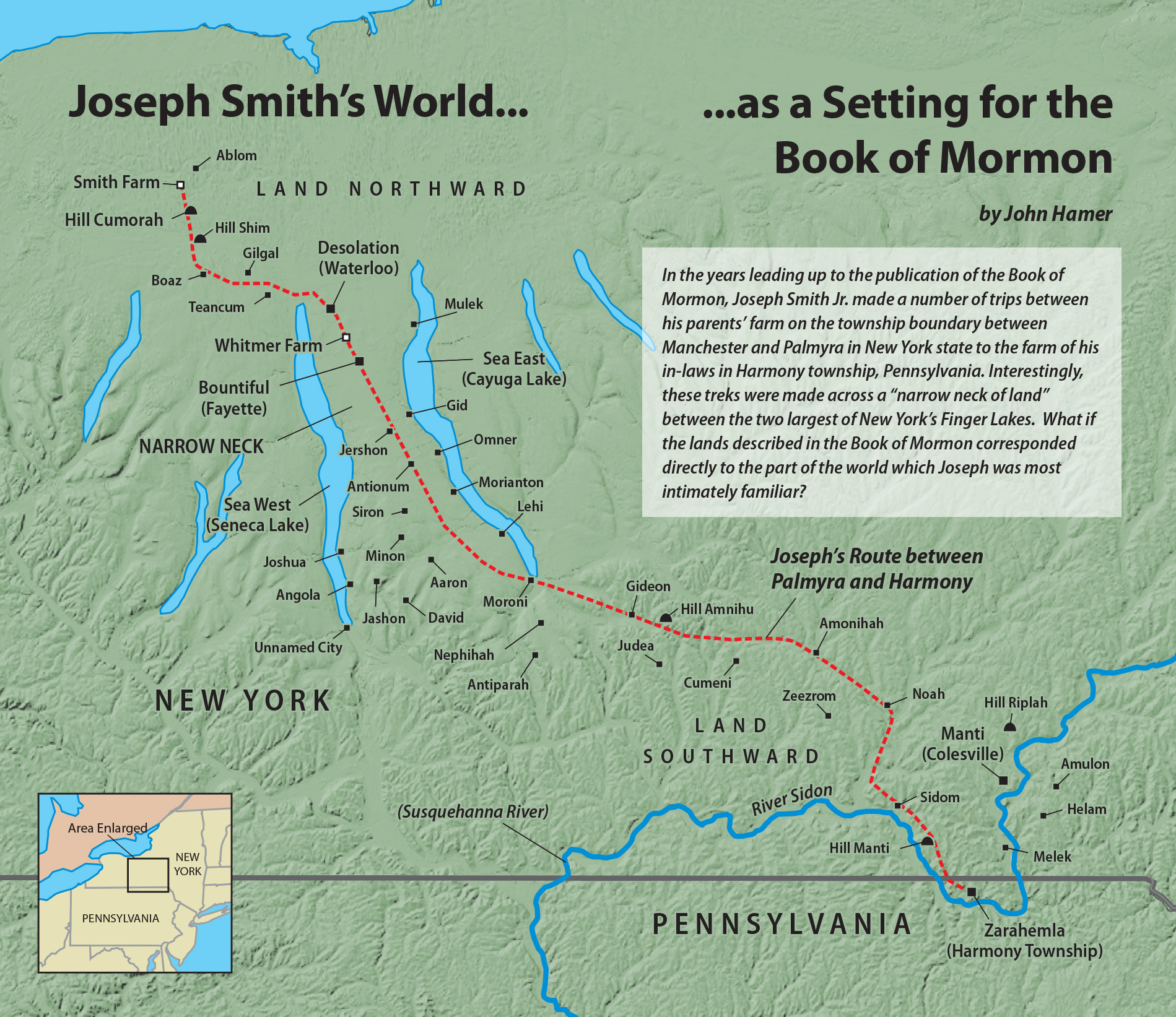
The bulk of the Book of Mormon narrative takes place in a region around the city of Zarahemla, which is “southward” from the Hill Cumorah, across a “narrow neck of land” separated by two seas (east and west). Given the fact that the Hill Cumorah is the only site in the text that was explicitly identified by the author at the time of the book's composition, it is interesting to note that a “narrow neck of land” between two bodies of water (east and west) does exist just to the hill’s southeast. This neck is the isthmus formed by Seneca Lake and Cayuga Lake — the two largest of New York’s Finger Lakes. These two freshwater lakes are both approximately the same size as the freshwater lake which the Bible names the “Sea of Galilee.” Seneca Lake has a surface area of 67 square miles; Cayuga Lake and the Sea of Galilee both have a surface area of 64 square miles. The Book of Mormon never uses the term “lake” to refer to a body of water, and so we might plausibly identify these lakes as Book of Mormon “seas.”
It is also intriguing to note that the most direct route between Palmyra, New York and Harmony, Pennsylvania crosses the isthmus between Seneca Lake and Cayuga Lake, and that Joseph would have crossed it many times in the course of his translation work. Taking this correlation southward, it is tempting to identify the Book of Mormon’s principle city, Zarahemla, with the farm of Joseph’s in-laws, the Hales. In the text, Zarahemla is set near a river, called the Sidon. The Hales’ farm was located near one of the largest rivers in the area, the Susquehanna. The Book of Mormon does not describe the outlet of the River Sidon, which seems to be outside the area of its principle narrative. The Susquehanna’s outlet in Maryland was certainly outside the range of Joseph’s experience. The text does describe the important city of Manti, which was up the River Sidon from Zarahemla. It is again tempting to link this city with the area around Colesville and South Bainbridge, New York — home of Joseph’s frequent benefactor, Joseph Knight.
_________________
Is this idea fun and clever? Sure. Does it have any explanatory value in understanding the Book of Mormon. No. What are the chances that Joseph Smith had this map in mind when composing the Book of Mormon? Zero. None of the limited geography theories have any historical merit and this is no different. In posting this, will someone somewhere now believe this is the real map? Yes, because we are in a post-truth, post-expertise universe where people imagine that individual "belief" alone is meaningful.